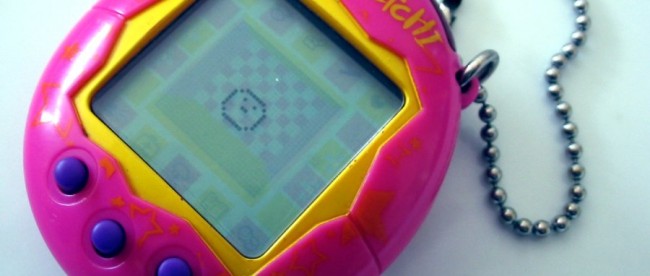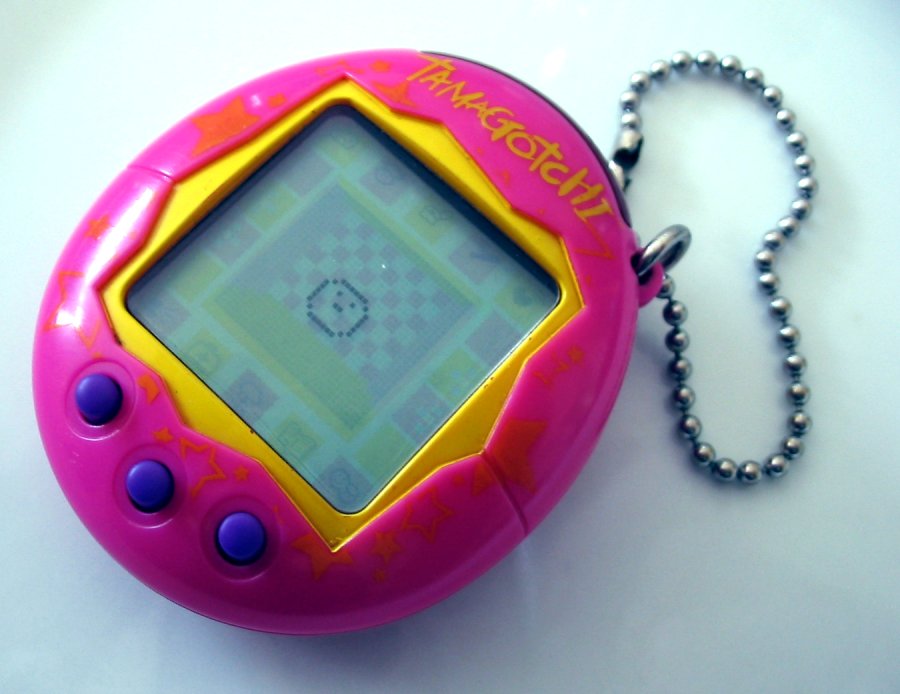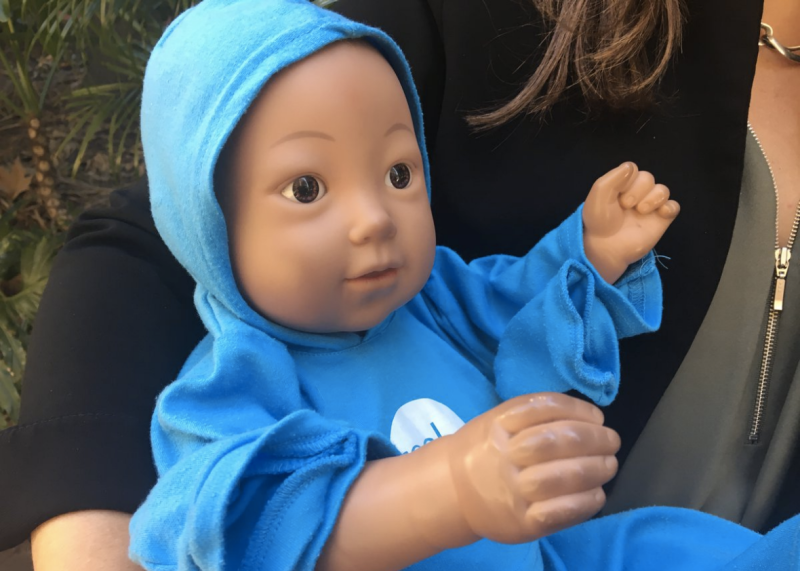Baby, Not Bored


If you’re a child of the 1990s, you probably remember the item above. It’s called a Tamagotchi — a virtual, digital pet that attached to your keychain or, more often, your belt loop. Your job, as the Tamagotchi’s owner, was to keep it fed, cared for, happy, and ultimately, alive. The toys proved popular with, well, everyone — the Tamagotchi fad took over Japan and the United States as well. And the reason why is simple: they were fun.
Which may be why the things below don’t quite work as well as we hoped.

That’s a baby, but not a real one. It’s something known as a “Baby Think It Over” — an “infant simulator” in the words of Ars Technica. Baby Think It Over (now “RealCare Baby 3”), according to the company that makes it, cries when it has to be “fed, burped, rocked or changed” (all poops are, of course, simulated) and coos “when its needs have been met.” One of the target audiences for the product is teenagers, with the goal being (again per the company’s website) “teen pregnancy prevention.” The theory is that if you have to care for a Baby Think It Over for a while, you’ll, well, think it over before decided to have a kid (or not take measure to not get pregnant). Because raising a baby takes a lot of work — even if the baby is just a robo-babie.
But there’s a problem. Remember how Tamagotchis were fun? Well…
Like any other public health initiative, the Baby Think It Over one was subject to summative research, as academics and epidemiologists hoped to see if the intervention was an effective one. In 2016, researchers in Western Australia published their findings in a medical journal called the Lancet, available here. And the bad news was that Baby Think It Over didn’t seem to reduce the number of teenage pregnancies.
The good news? There wasn’t any. But there was more bad news. While Baby Think It Over got the teenagers thinking, they may have thinking about how much fun it might be to have the real thing. Ars Technica summarizes the findings:
Of the 1,267 teens that had to care for, burp, change, and feed the robot babies over a weekend, 17 percent (or 210 girls) had at least one pregnancy by the age of 20. That’s a slight jump from the pregnancy rate of the 1,567 girls in the control group who received a standard school curriculum on sex education and parenting. Their pregnancy rate was just 11 percent (or 168 girls).
The researchers wouldn’t offer a reason why this happened — the data they collected was anonymous, so there wasn’t an opportunity to do a qualitative review of the experiences of the girls who used the robot babies and ended up with real pregnancies. But the study’s author, researcher Sally Brinkman, shared a thought with the Sydney Morning Herald: “Anecdotally, a lot of the students really enjoyed the program … there was a lot of positivity around the program, so it didn’t really work in putting the kids off.” Further, per the Morning Herald, “the students got quite a lot of positive attention from family and even strangers on the street and they went about their weekends toting the electronic dolls.”
The makers of Baby Think It Over, in the words of WNYC, “distanced the company from the results;” a spokesperson wrote off the study as “not reflective of our product nor its efficacy.”
Bonus fact: While dolls may not be a good way to lower teen pregnancy rates, TV might be. In 2009, MTV debuted a TV show titled “16 and Pregnant” which, per Wikipedia, “follows the stories of pregnant teenage girls in high school dealing with the hardships of teenage pregnancy.” As NPR reported, the viewers of the show didn’t want to be like what they were watching; teen birth rates fell “5.7 percentage points over [the] 18-month period ” after the show debuted. Researchers attributed a third of that decline to the show itself.
From the Archives: Children of the Box: The neat (as in, well-organized) way Finland treats pregnancy.
Related: A variety of Baby Think It Over and competitive products. Your results may vary. Also: Tamagotchis!
